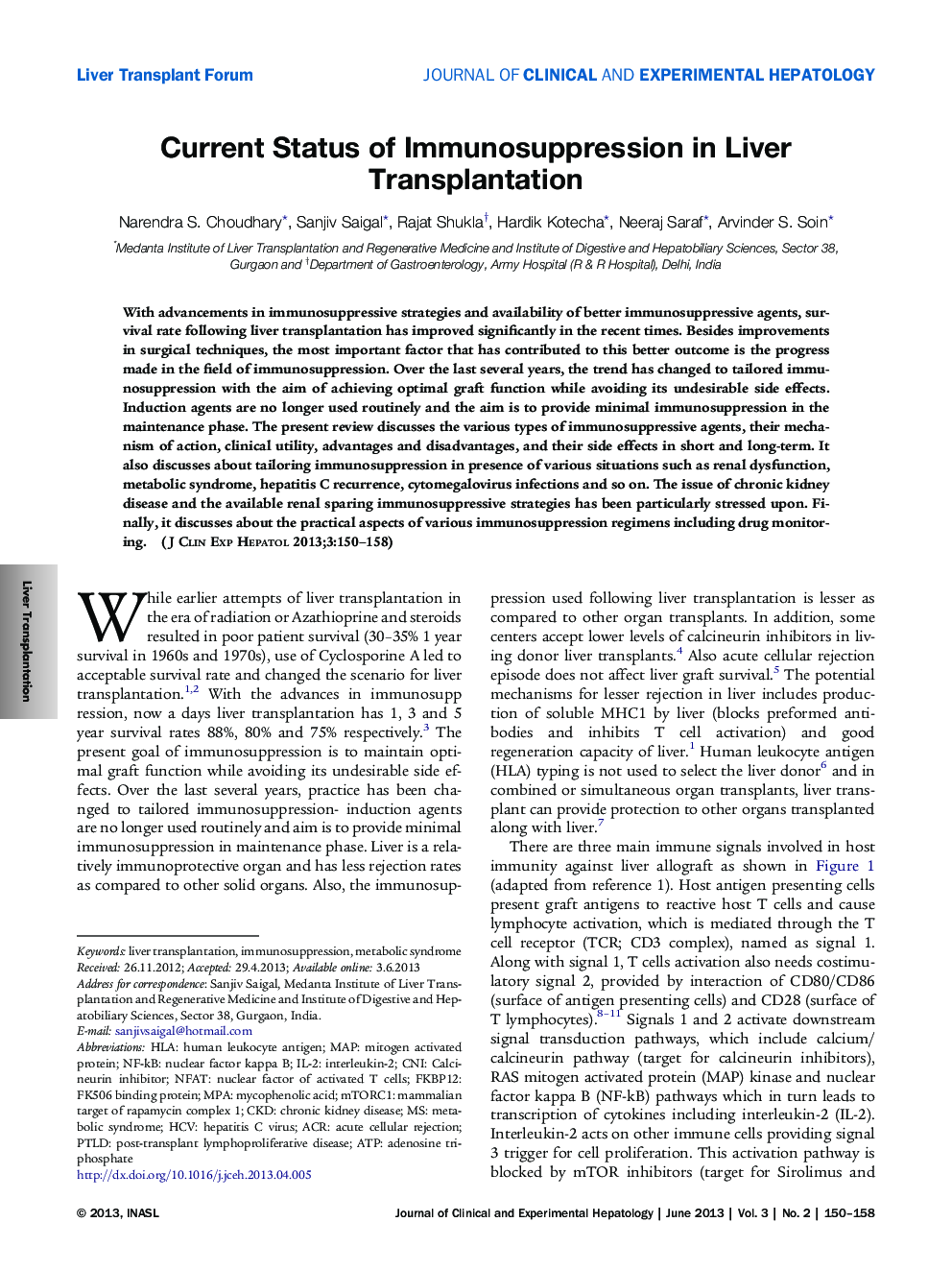| Article ID | Journal | Published Year | Pages | File Type |
|---|---|---|---|---|
| 3339440 | Journal of Clinical and Experimental Hepatology | 2013 | 9 Pages |
With advancements in immunosuppressive strategies and availability of better immunosuppressive agents, survival rate following liver transplantation has improved significantly in the recent times. Besides improvements in surgical techniques, the most important factor that has contributed to this better outcome is the progress made in the field of immunosuppression. Over the last several years, the trend has changed to tailored immunosuppression with the aim of achieving optimal graft function while avoiding its undesirable side effects. Induction agents are no longer used routinely and the aim is to provide minimal immunosuppression in the maintenance phase. The present review discusses the various types of immunosuppressive agents, their mechanism of action, clinical utility, advantages and disadvantages, and their side effects in short and long-term. It also discusses about tailoring immunosuppression in presence of various situations such as renal dysfunction, metabolic syndrome, hepatitis C recurrence, cytomegalovirus infections and so on. The issue of chronic kidney disease and the available renal sparing immunosuppressive strategies has been particularly stressed upon. Finally, it discusses about the practical aspects of various immunosuppression regimens including drug monitoring.
